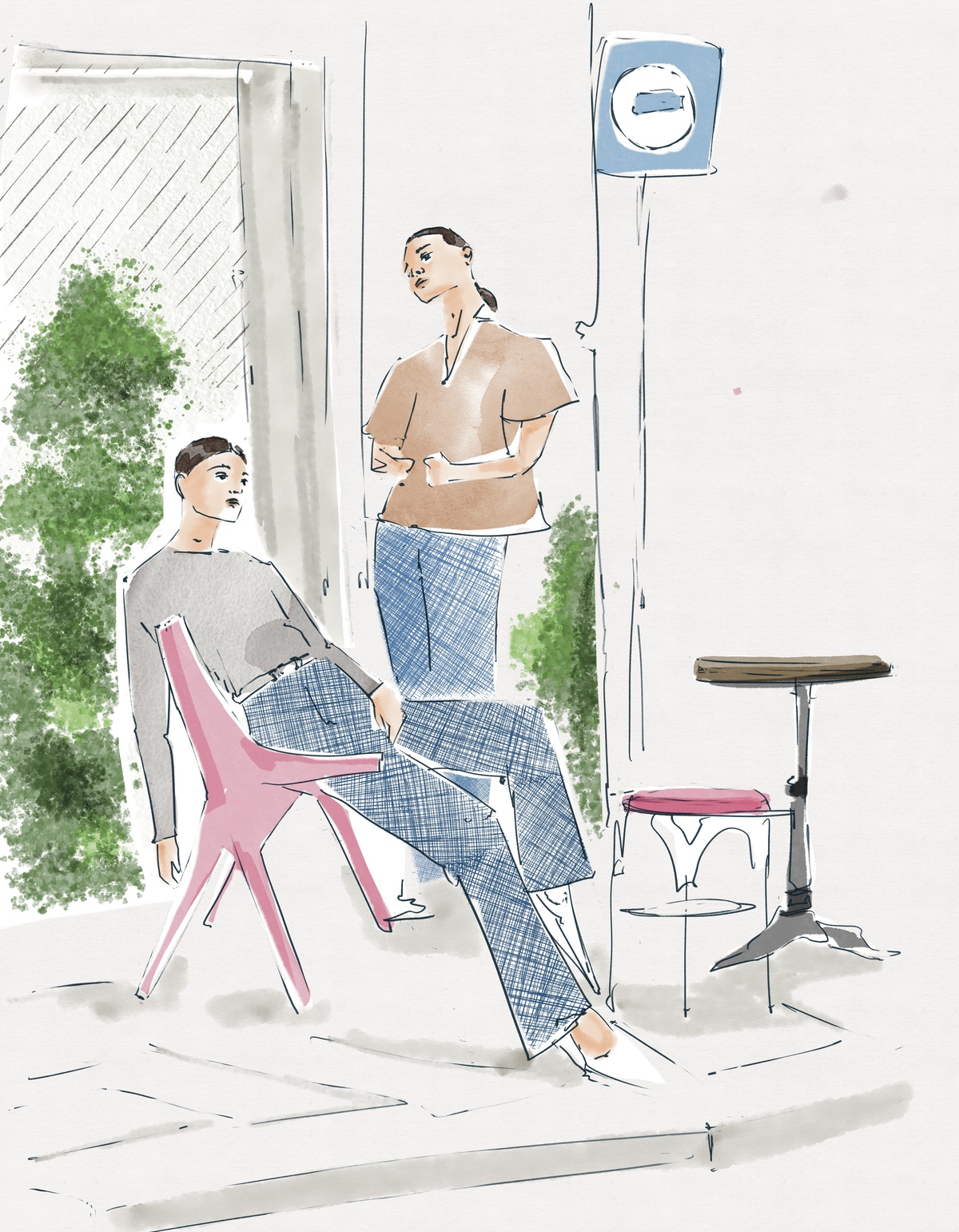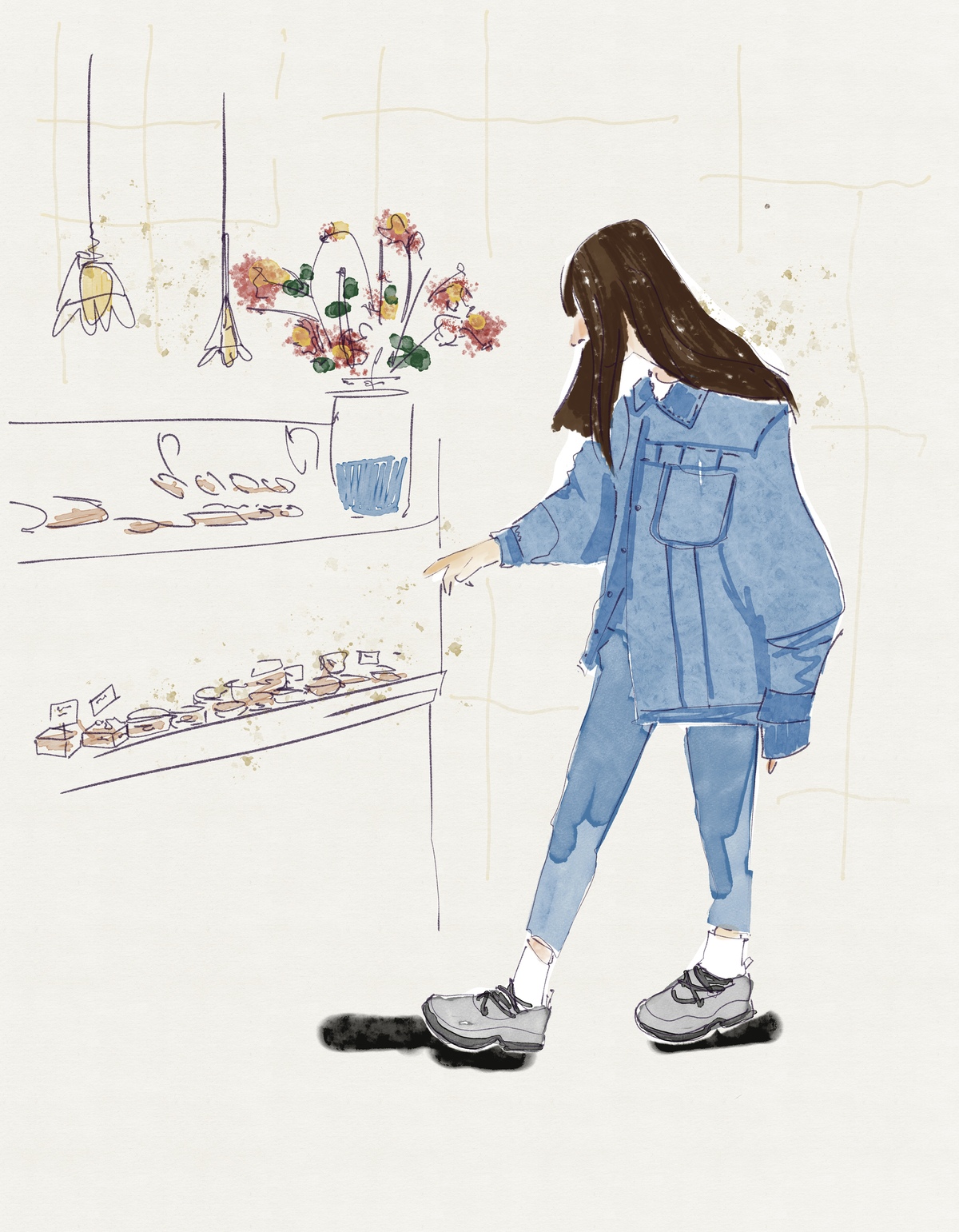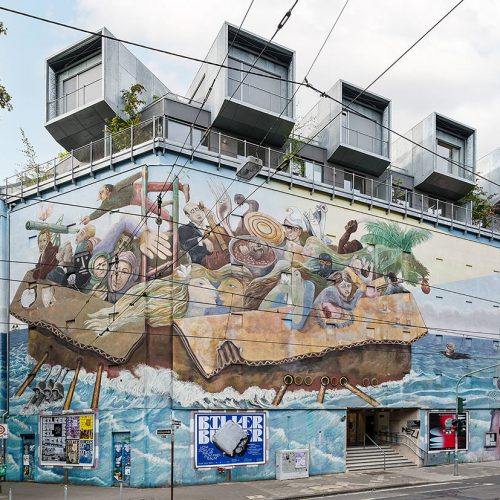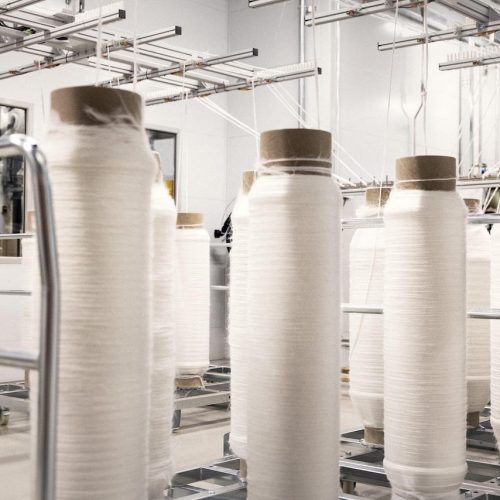The Reality Behind The Denim Industry
Denim, which is one of the most used garments in clothing, might look like an attractive option to lots of consumers. Though their inclusive features sound pretty innocent, there is a heartbreaking story behind the scenes of the industry.
To receive the Luxiders Newsletter, sign up here.
Denim, which is one of the most used garments in clothing, might look like an attractive option to lots of consumers. Though their inclusive features sound pretty innocent, there is a heartbreaking story behind the scenes of the industry. With over 3 billion denim jeans on the market currently, we need to reconsider our consumption when it comes to this specific garment. Several factors push us to reconsider when purchasing denim pieces. Firstly, the garment requires a great amount of water usage. Then, the indigo-dyeing process of the garment most likely comes up with chronic illnesses. Alternatives to it like stone washing also consist of environmental concerns. As an unfortunately usual phenomenon in the fashion industry, the denim market has several practices of exploitation, too.
SUSTAINABLE FUTURE OF DENIM
When textile production already causes 1/5 of the water pollution globally, denim shows itself as a highlight material in the share. For just a kilogram of that, up to 65 liters of water is being polluted. On the other hand, up to 10,000 liters of water is used just to manufacture one pair of blue jeans… This is the reality we must face. Thanks to the process of awareness being raised, some of the big brands have approached to produce “waterless” denim, or denim with very little use of water. Therefore, there is a commitment to make the denim industry sustainable. However, the future of denim is not only dependent on water use: A real major problem that has fewer media appearances than water use lies under the indigo-dyeing process.
The indigo-dyeing process of denim is greatly effective on the industry’s pollution of waters. Since synthetic indigo is the leading material to color denim in blue, its inability to solute in water puts the initiatives to reduce the use of water in shadow. A study by Aravin Prince Periyasamy and Saravanan Periyasami, published by the American Chemical Society in 2023 states that the denim industry consumes 50,000 tons of synthetic indigo. The dye is known to include heavy metals like chromium, copper, and nickel. Additionally, the stage of desizing the denim comes up with several chemicals such as Na2Co3, and oxidative ingredients which are poisonous to nature. The problem with the overall industry is not limited to its toxic stance towards the environment, but those heavy metals are clear threats to human well-being. The same study by Periyasamy & Periyasami informs that those chemicals are affecting kidneys, the nervous system, the immune system, and the skin – which usually results in birth defects and cancer. How to change the industry from this exact point that is clearly harmful has various answers, including switching to cotton-based clothes or biodegradable fabrics like Lyocell instead of denim.

Illustration by FaberZhenya
ALTERNATIVE INITIATIVES
There stands the sandblasting technique as an alternative option, which has caused disasters in different areas of the world. Even though it offers the stylish worn-out look which has gone viral recently with Glenn Martens’ Diesel and the influence of Y2K; the perspective of exploitation does not agree so. The technique is based on replacing the use of water with sand and softening the denim with it. However, an article by BBC shows the real experience of workers in this industry. Behind the curtains, an 18-year-old Bangladeshi worker in the sandblasting industry states that he has developed trouble breathing. Additionally, 46 workers died from silicosis in Turkey - which led to a sandblasting ban in the country. This is directly related to sprinkled particles of silica dust during the process. Those particles place themselves in the lungs of the workers. There a dilemma occurs: To protect the environment from water pollution caused by indigo-dyeing, the preferred technique of sandblasting is unable to prevent the workers from maintaining their health. How can we maintain environmental protection without violating human rights?
We asked Marian von Rappard, co-founder of the DAWN, what are their initiatives to solve these factors of pollution and negative effects on the environment. “Let’s divide the denim production into 3 different phases,” von Rappard says. The first phase comes up as cotton/raw material production. In DAWN, von Rappard states that the goal is “to not only know the farmer but having real data proofing" that they limit their impact at the farming stage.” and emphasizes the regenerative organic cotton fabric that the brand developed for the next season. Using Tencel as an alternative to cotton is another application they adopted. For the second phase, which is the dyeing process, von Rappard mentions how ‘the market’ still needs the biggest polluter, black/black (weft and warp) but notes that “Strategically we focus on 2-3 main fabric mills going forward. Both use Archroma Dye Stuff and are Blue Sign approved (or in the process)”. When it comes to the third phase, the denim washing and finishing, DAWN uses Jeanologia EIM Score to track and compare the impact of all washes on this season. “Our goal is to forecast the usage of water, chemicals and work closely with the laundry in order to compare it after the actual production.” he says.
Katya Kruk, the Impact & Innovation Director at Armedangels says the brand developed the DetoxDenim in the light of ‘detoxifying’ all steps of the jean production. “Lowering the ‘chemical load’ on our planet starts with fiber: our fiber comes from organic cotton cultivation. This means that no synthetic pesticides are used at the farm.” Kruk says. “We also work on increasing the share of recycled cotton – further reducing the impact on the environment (by using existing fiber and not growing more). It then goes through the production steps where each step is certified to a strict list of ‘not-ok’ substances. For example, the bleaching step in our supply chain will not involve using toxic chlorine.” As Armedangels under a de facto inspector role through their supply chain, this makes them accountable for changing the future of denim. Kruk states that their suppliers are GRS (Global Recycled Standard) and/or GOTS (Global Organic Textile Standard) certified and that enables Armedangels to produce with a lower impact. “For example, bleaching usually involves the use of hazardous chemicals in conventional production – often under unacceptable working conditions,” states Kruk. “Instead of toxic chlorine and harmful potassium permanganate, we use modern techniques such as laser or ozone treatment.”
Sebastian Proft, owner of the Dutch ethical jeans brand Kings of Indigo also mentions the ozone treatment. Placing circularity and transparency to the core, Proft refers to the holistic approach to sustainability that Kings of Indigo believes in. “For the wet processes, the conventional variant is indeed associated with excessive use of water and harmful chemicals and uncontrolled disposal. Luckily, by now a lot of alternatives exist to decrease the negative environmental impact,” says he. “For Kings of Indigo production, these include laser solutions, ozone washing, and eco-stones.” In addition, Proft states that the brand offers a range of non-dyed and raw denim that does not get involved in major treatments.
Rebecka Sancho, Head of Sustainability at G-Star RAW, designates the solution deriving from the actual problem: “Fashion industry is a polluting industry, but people will continue to wear and buy clothes,” she expresses. “The importance lies in discovering how to do things better and scaling it across the industry.” She explains that G-Star set several policies and targets on sustainability after 2006. Demonstrating the brand’s decision on working with organic, recycled, regenerative, bio-based, and compostable materials only; she remarks “We believe it is our responsibility to support sustainable agriculture practices,” when noting that they joined Organic Cotton Accelerator. Focusing on reusability and durability, Sancho introduces a three-step action: “If your jeans have lost a button or have a hole or a tear, you can get them repaired at our Certified Tailors, on us,” she starts. “Customers will be able to trade in and buy second-hand G-Star garments on our website,” continues she. “If your denim is beyond re-selling or repairing, you can hand them in at our stores for proper and responsible recycling.” It is not only durability, but G-Star focuses on reducing water usage and chemical use with several practices: Collaborating with Cradle to Cradle Institution to produce sustainable jeans, launching the Dyed by Minerals collection that functions by natural coloring instead of indigo-dyeing recently, and the brand’s support for their sustainable suppliers with several projects worldwide.

Illustration by FaberZhenya
TREATMENT SYSTEMS
As denim is responsible for meteoric water usage, water treatment systems emerged as a potential ‘savior’ to take the production into a sustainable line. We asked the denim leaders for their thoughts on installing treatment systems. There, Katya Kruk stated that “Wastewater treatment systems, for example, greatly enhance water quality by removing harmful contaminants before discharge. This reduces pollution, protects public health, preserves ecosystems and contributes to a healthier environment and a more sustainable future”. These systems are pretty significant for environmental benefits: “Yes, surely that is a massive impact. Whether the Fabric Mill or the Denim Laundry needs to have a proper Water-Treatment-System to not allow toxic, polluted water run into rivers or groundwater.” On the flip side, Sebastian Proft puts emphasis on the alternative perspective. “It is always better to prevent than to cure,” he says, exemplifying less water use and no use of hazardous substances. For the rest, he supports the treatment systems, too. Sancho mentions the strategy of G-Star following installing treatment systems: "A clean input leads to a clean output," She starts. "We are proud to work with suppliers who really see the benefit in investing in sustainable innovations and one part we have seen growing a lot over the last couple of years is water recycling. Some of our suppliers already recycle up to 100% (excluding evaporation) of the wastewater." Sancho also notes the water treatment systems and monitoring of them to be a requirement of G-Star for years.
MAINTAINING TRANSPARENCY AND ACCOUNTABILITY
It is often witnessed that fast-fashion and luxury brands do their marketing through sustainability. There, differentiating between honesty and marketing strategies carries great importance. Marian von Rappard brings the experience of DAWN to the table and explains: “From day one we’ve been witnessing ‘brands with budget’ being ‘loud’ about questioning claims. It is not a fast-fashion thing, it is simply marketing. We have our own factory, we do the ‘real shit’ and yes, I sometimes wish to hide myself behind some certificates rather than sitting on that roller coaster and being accountable for too many things.” There, Armedangels appears to share this motto of being brave and conscious enough to produce environmentally responsible garments. “We believe transparency is at the heart of all successful relationships,” Kruk describes it as one of the core values of the brand. “We use blockchain for tracing the origins of our wool," she says. “We test innovative solutions like the physical tracer or RFID chip to support the transparency journey. We also count on neutral verification,” adds she. Mentioning the Armedangels scored the Leader status again in the annual assessment by the FWF’s Brand Performance Check of 2022; Kruk stresses that supporting consumers to make more conscious choices about reducing their footprint is a part of the Armedangels’ mission. Sancho, on the other hand, emphasizes the G-Star's information-sharing practice. “Since 2014 you can see exactly where each G-Star garment was put together via the 'Where is it Made' button on the Product Detail Page,” she says. Hoping to extend this information to all supply tiers in the future, Sancho mentions the brand’s supply chain list. “It includes detailed information about every production unit from factory-specific information to worker demographics and sustainability certifications.” For Kings of Indigo, Proft mentions “Since 2020 we work together with Retraced. The platform helps us to map our supply chains and track sustainability efforts,” and continues with a fact on information-sharing: “This is all made visible for consumers through a QR code on the hangtag of each product. It allows consumers to make informed decisions and hold us accountable.” Improving to a complete status, Proft also states that 78% of Kings of Indigo’s supply chain is completely transparent today.
FAST FASHION AND CONSUMER CULTURE
What makes denim this irrevocable kind of an option in fashion is not only being stylish or timeless but also the impact of contemporary macro-trends. Looking back to the Y2K revival in the 2020s, double denim outfits have become ultimately popular again recently. Combining these trends’ existence and fast fashion’s impact of direction towards mass consumption, denim leaders need to encourage circularity to keep the future more sustainable. However, there are doubts if most of them do that. Rebecka Sancho from G-Star explains, “It is so important to realize that you are not there by just using sustainable fibers, product sustainability is so much more than that.”. Drawing attention to the production process, dyeing, and washing, she continues, “By working with Cradle to Cradle Institute together with our partners, we have really been able to learn, improve, and scale response production processes.”. For Kings of Indigo, Sebastian Proft shares that “We strongly believe that circularity is the way to go for the future. To achieve this, a change of mindset and systems is necessary.”. Proft introduces some statistics: 32% of the materials used in the 2022 collection of Kings of Indigo were recycled, they are critical about the use of blends in fabrics to maintain circularity and the brand is working on recycling strategies, repair, and reuse options. Katya Kruk states that “Although some fashion companies have already taken steps towards a more sustainable production, it is important to emphasize that the industry is still in a transition and there is a long way to go.” Mentioning innovation, transparency, increasing recycled fibers and reducing water consumption, Kruk says Armedangels makes high-quality products to extend the use phase to contribute to the circular future. “We also don’t want any Armedangels products to go to waste,” She continues. “Therefore, we offer more sustainable end-of-life options for all our products through re-Commerce (our Second-Hand shop) and recycling." Marian von Rappard thinks brands mostly wish to participate in a circular model. “Most and for all because it will be the perfect ‘excuse’ to continue a high-level consumption,” He explains. “Still, I believe circularity is the future, ours as well. According to me, it will take a few more years, more reliable data, more collaborations, and especially more government involvement in order to succeed.”
WHAT TO EXPECT
From production to dyeing and resizing, seemingly we have a lot to do with denim to make it sustainable to use and produce. We are all responsible for is questioning everything about denim. There, as mentioned by Sebastion Proft of Kings of Indigo, it is always better to prevent than to cure: We all can go with buying less, buying worn-out and organic to minimize our impact on the environment. Trusting the brands based on their transparency and accountability is always good. Just like the G-Star, checking if the brand shares information on how the pieces were made can increase our level of conscious consumption. Practices of reusing, recycling, and caring about the durability of denim pieces to fight the mass consumption culture of the age will reduce our harm to the planet when we make our choices to get denim consciously. Cooperation of responsible brands and informed consumers pictures the place we are going: Styling denim pieces without contributing to the planet’s destruction and exploitation of labor, and of course, featuring the joy of being conscious.
Words:
Tolga Rahmalaroglu
Luxiders Magazine Contributor




